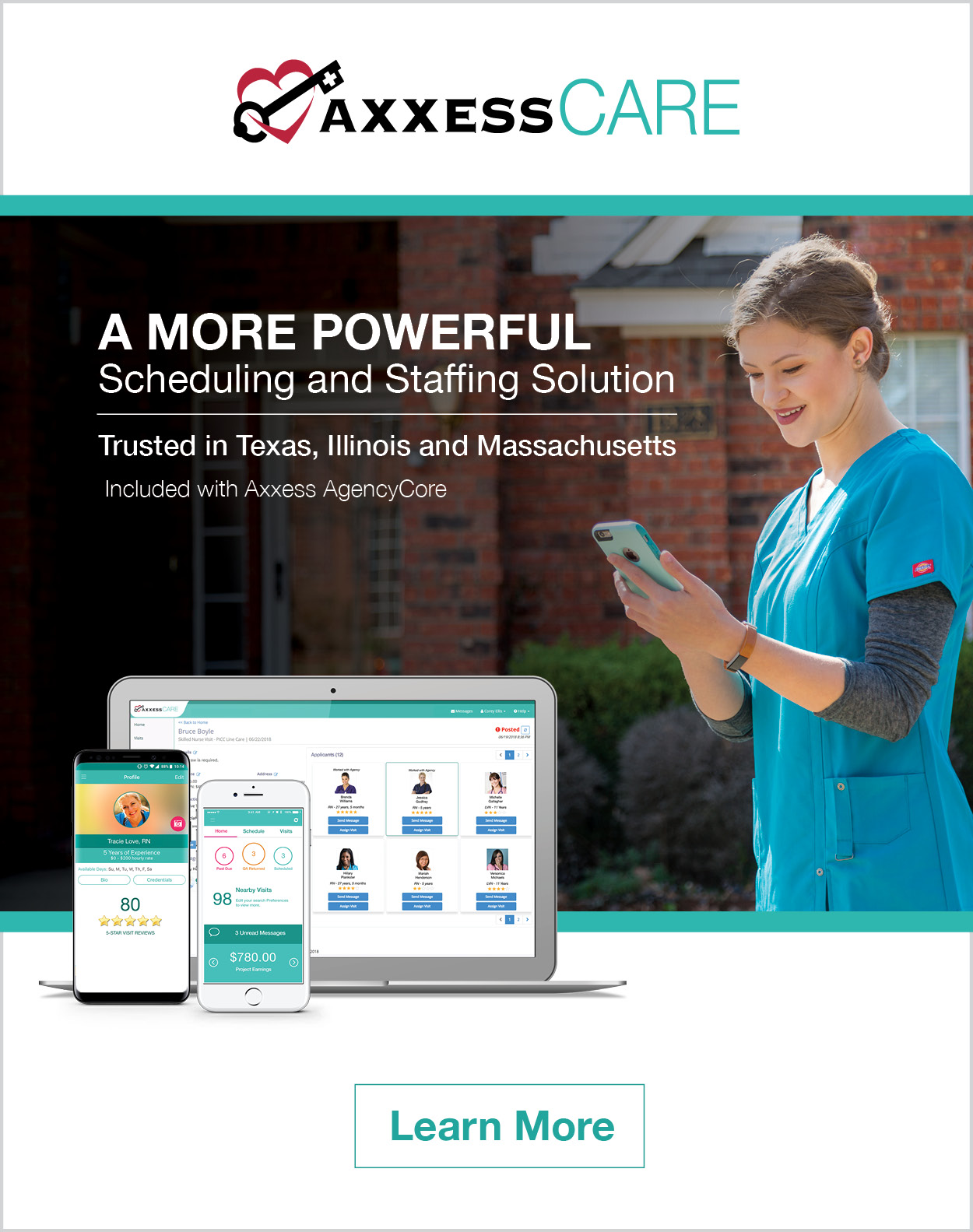Running a business can be hard, software selection should be easy – Beni DeLoach
Selecting the right home health care software for your business can be a challenging task. With the
growing number of software vendors, the process of selecting the right application can be confusing
and overwhelming. Whether you choose to hire external consultants, go at it alone, or rely on sales
people, there are many aspects of your business to consider. At Axxess, we have identified six
steps to keep in mind when selecting the right software with the best fit for your home health agency.
Step1: What Do You Need?
While this seems like a given, it’s important to put this at the top of the list in the selection process. A
“needs” assessment and analysis of your business is a critical step in the process. All stakeholders
should be involved in determining the needs of the company as it relates to their role and expertise.
Once those needs are identified, they will serve as a guide for evaluating the various software
applications available.
Step 2: Research, Research, Research
Due to federal mandates for the implementation of electronic medical record systems across the
healthcare field, it is no surprise that there has been an increase in the number of software vendors
on the market. As with any other product or service, it is important to assess a company’s overall
viability and sustainability to ensure the potential longevity of a vendor. The second item to consider
when reviewing a company is determining whether or not homecare is their market niche. A software
vendor’s understanding of the homecare industry is critical in providing ongoing support, compliance
and development of the software application.
Step 3: Cost is Key
For many agencies, cost is the single most important determining factor when selecting a software
application. Although cost and budget are significant and should be taken into account, a
comprehensive review of the true cost and benefits of features should be considered. For instance,
some software vendors allow customers to purchase and own the software. This option requires a
significant upfront investment. Other vendors allow customers to pay a low monthly subscription fee
and provide ongoing support for the software. For this second option, some vendors charge for
different modules of the software while others allow customers to pay a flat fee for access to the
entire software application. Additional costs can include the number of licenses, set-up fees, how
many users can access the software, a point-of-care feature, software upgrades and several other
pricing options depending on the vendor. Like most things in life, you get what you pay for; so
remember to carefully review the “true” costs of the software before making a choice. Be willing to
pay for quality and dependability versus an inexpensive solution.
Step 4: Seamless Implementation
Implementation of the software application should also be assessed. Software implementation is
often overlooked due to the more immediate concerns of pricing for company executives. The ease
of implementation should be researched to determine how long and how difficult the implementation
phase will be. Involving the potential users of the software in the selection process will help prepare
and open up their minds to the potential challenges that will be faced after the eventual choice of the
software. Agencies must ask the software vendor how much help they will receive in the
implementation of the software. It is very helpful to have representatives of the software company
available to answer questions and offer guidance during the implementation phase of the software.
Needless to say, agencies should not select a software vendor that is unwilling to actively engage in
and support their business during the initial implementation and training on how to use the software.
Step 5: Do Your Homework
Request several references and recommendations to get a better picture of the vendor and product.
References should consist of current clients who are actively using the software who you can speak
to and ask questions. Recommendations should also be obtained from their active client base, as
well as anyone who has used the software application. By speaking with current users, you gain
insight into their own successes and challenges with the software.
Step 6: Training & Support…Non-Negotiable
Last but definitely not least, training and support is vital in the success of your agencies
implementation of a software application. Initial and on-going training needs should be addressed
prior to the selection of a specific vendor. Questions that should be asked are:
- How many training hours are provided?
- How is the initial training provided? Via webinar, on-site, etc.?
- Is there a fee?
- Is on-going training available? If so, is there a fee?
Axxess’ industry leading complete home health care software solution is utilized by over 65,000
home care professionals in 40 states nationwide to serve over 300,000 patients. Our solutions are
developed by a collaborative effort of industry experts, consultants, programmers and researchers.
At Axxess, we know home health care. We leverage our deep consulting background to offer
innovative solutions that exceed your expectations. We offer unlimited training and support to help
you succeed. Schedule a demo today to learn how our customized solutions can meet your needs.




